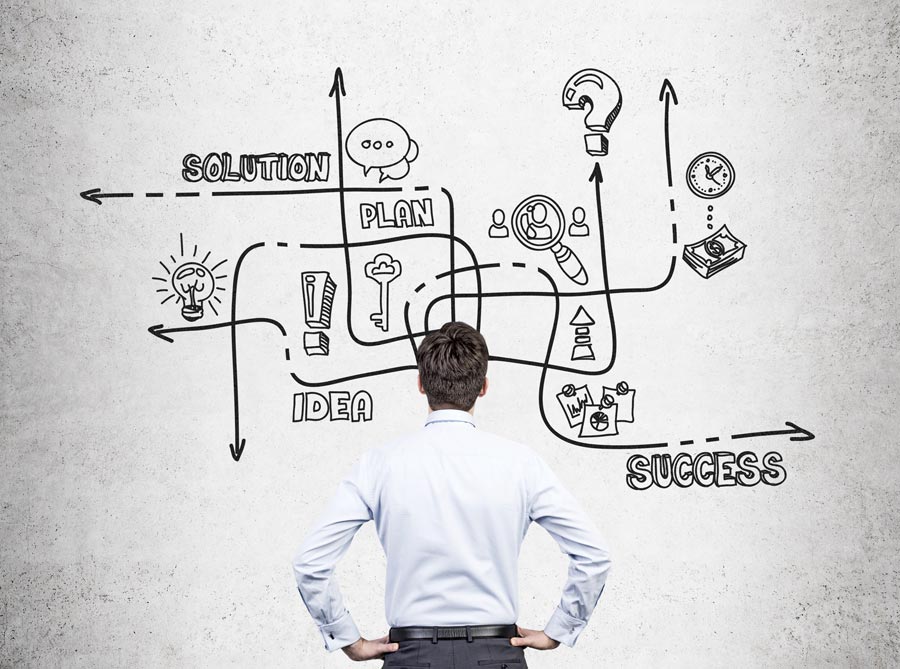There’s a war going on inside the human brain—and brands are fighting for shelf space.
Every time someone scrolls, swipes, or squints at a billboard while dodging potholes on I-10, the subconscious mind is deciding which messages deserve to live rent-free and which ones get evicted without a second thought. If that sounds dramatic, it’s because it is. Welcome to modern marketing, where the loudest voice in the room isn’t always yelling—it’s just bold enough to be remembered.
Now, when I say “bold,” I don’t mean shouting in all caps or using neon green Comic Sans. Boldness is psychological. It’s about how branding taps into the mental shortcuts the brain uses to make decisions. Because the truth is, most people are running on autopilot. They don’t have time to analyze every ad, decode your brand story, or figure out what the heck your fancy new tagline even means. They want clarity. Confidence. And maybe a good laugh if they’re lucky.
That’s where bold branding comes in. The brain loves certainty. It doesn’t want to work harder than it has to—kind of like your cousin who still thinks “streaming” means taping over old VHS tapes. The brain looks for patterns, contrast, and immediate meaning. It decides in a split second whether a brand feels trustworthy, useful, or worth ignoring.
Let’s say someone walks into a grocery store and sees ten bottles of hot sauce. Nine of them look like they were designed by a sleepy committee. One has a flaming pepper in a boxing ring wearing a championship belt. Guess which one they’ll remember?
The reason is simple: bold visuals create neural bookmarks. That’s science-speak for “the brain remembered the thing with the spicy little guy.” When a brand leans into a clear, distinct identity—whether that’s with color, voice, or design—it makes it easier for the brain to store and retrieve. This is also why people remember jingles from 1992 but can’t recall their email password from two days ago.
But boldness isn’t just about looks. It’s also about voice. Some brands talk like they’re reading from a tax form. Others speak like they’ve had a double espresso and aren’t afraid to ruffle a few feathers. The ones that sound human—direct, funny, confident—win more attention because they feel familiar. The brain likes familiar. It’s why people order the same thing at restaurants and why every family has one person who won’t try sushi.
Bold brands also make decisions. They know who they’re talking to, and more importantly, who they’re not talking to. That clarity matters. Brands that try to appeal to everyone end up sounding like a soggy slice of white bread: inoffensive, forgettable, and probably going stale by the minute. But when a brand chooses a lane—and stays in it—it becomes easier for people to connect. It gives the brain something to anchor to.
Now let’s talk about fear. Fear is the #1 reason brands avoid bold moves. The fear of being “too much.” The fear of losing someone. The fear of standing out for the wrong reason. But here’s the thing: in 2025, the real risk is being invisible. With the tidal wave of content, ads, and digital noise hitting people every day, playing it safe is basically a shortcut to the junk drawer of public memory.
Audacity doesn’t mean being obnoxious. It means being intentional. It means designing with contrast, writing with clarity, and showing up with a personality. It’s the difference between a handshake and a wet noodle. One gets remembered. The other gets quietly wiped off and forgotten.
Even small things can make a bold impression:
- A logo that actually looks like something and not a committee-approved abstract squiggle.
- A color palette that doesn’t make people feel like they’re trapped in a waiting room.
- A slogan that doesn’t sound like it was pulled from a conference room buzzword bingo card.
Here’s another brain trick: the bolder the brand, the more quickly the brain decides whether it “gets it.” That decision—whether conscious or not—creates trust. And trust creates buying behavior. That’s not marketing fluff, that’s neuroscience. People are more likely to remember, revisit, and recommend brands that make them feel something—whether that’s amusement, clarity, or even just, “Hey, that was different.”
And finally, bold brands stick around. Not just in people’s heads, but in the marketplace. They evolve, sure—but they don’t shapeshift into whatever the trend of the month says they should be. They stay consistent. They build equity. They own their space and invite others to join them, rather than chasing the crowd.
So if a brand is feeling flat, forgettable, or lost in the shuffle, maybe it’s not a visibility problem. Maybe it’s a personality problem. And personality, like hot sauce, works best when there’s just enough kick to make people say, “Now that’s something I’ll remember.”



